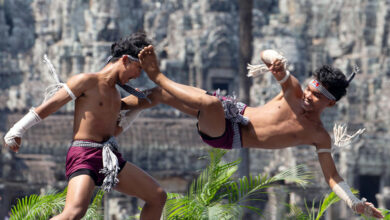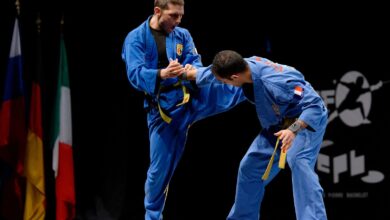Arnis: The Art of Stick Fighting

Martial Arts: Arnis, also known as Eskrima or Kali, is the national martial art of the Philippines. It is a weapon-based fighting system that incorporates sticks, blades, and empty-hand combat. Arnis has deep historical roots in Filipino culture, having evolved through centuries of warfare, colonial resistance, and self-defense traditions.
Origins and Early Development
Arnis traces its origins to pre-colonial Philippines, where early Filipinos developed various indigenous combat techniques for self-defense and warfare. The fighting methods were influenced by:
- Tribal Warfare – Ancient Filipinos engaged in battles using spears, bolos, and wooden sticks.
- Austronesian Migration – Early settlers brought combat techniques from Southeast Asia and the Pacific Islands.
- Indian and Chinese Influence – Trade with India and China introduced swords and martial philosophies that shaped Arnis.
Arnis During the Spanish Colonization (1521–1898)
With the arrival of Spanish conquistadors in the 16th century, Filipino warriors, known as mandirigma, fought using Arnis techniques. However, the Spanish banned the practice of native martial arts to prevent uprisings. As a result:
- Arnis techniques were disguised in dances such as the Sakuting and Sinulog.
- Filipino warriors integrated Spanish fencing techniques (Esgrima) into their system.
- Secret training continued within families and warrior clans.
Arnis in the Philippine Revolution (1896–1898)
During the Philippine Revolution against Spanish rule, Arnis was instrumental in guerrilla warfare. Filipino Katipunan revolutionaries, including Andrés Bonifacio, used bolos, knives, and sticks in combat against Spanish forces. Arnis played a crucial role in battles such as:
- The Cry of Balintawak (1896) – Revolutionaries, armed with machetes and sticks, resisted Spanish forces.
- The Battle of Tirad Pass (1899) – Filipino fighters used Arnis techniques against American troops.
American and Japanese Occupation (1898–1945)
With American colonization (1898–1946), Arnis declined as Western-style boxing and judo gained popularity. However:
- Filipino martial artists adapted Arnis into law enforcement and self-defense training.
- During World War II, Filipino guerrillas utilized Arnis techniques against Japanese forces.
The Modernization and Global Spread of Arnis

Arnis as the National Martial Art
- In 2009, the Philippine government officially declared Arnis as the National Martial Art and Sport through Republic Act No. 9850.
- It is now taught in Filipino schools, law enforcement, and military programs.
Arnis in International Recognition
- Filipino grandmasters such as Remy Presas (Modern Arnis) and Dan Inosanto (Kali/Eskrima) helped spread Arnis worldwide.
- Arnis is now practiced in over 50 countries, influencing military, law enforcement, and mixed martial arts (MMA).
Techniques and Training
Arnis training includes:
- Solo Baston (Single Stick) – One stick techniques emphasizing striking and blocking.
- Doble Baston (Double Stick) – Two-stick techniques focusing on flow and coordination.
- Espada y Daga (Sword and Dagger) – A combination of long and short weapons.
- Empty-Hand Combat (Panantukan and Dumog) – Filipino boxing and grappling.
- Disarming Techniques – Defending against armed attackers.
Arnis is more than just a martial art—it is a symbol of Filipino heritage, resilience, and adaptability. From its warrior roots to its modern global presence, Arnis continues to thrive as a practical, effective, and respected martial art.



